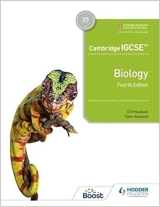Chapter 17. The skeleton, muscles and movement
Page 153
1. Upper arm bone; humerus. Upper leg bone; femur. Hip bone; pelvic girdle. Breastbone; sternum.
‘Backbone’; vertebral column, (not labelled). Lower arm bones; radius and ulna.
Page 154
1. Jaw bone/skull, fingers, toes, ribs/spinal column. (These are ‘like’ hinge joints
in their action but may be given other names).
2. The skeleton protects vital organs (e.g. brain, spinal cord, lungs).
3. The rib cage protects the heart and lungs; its movement results in breathing. The pelvis is
essential for locomotion using the legs and also protects, to some extent, the organs of the
abdomen particularly the uterus. The skull protects the brain but also allows the head to move.
Page 157 (left)
1. Walking to school. Regular training for a football team. These both involve sustained,
repeated exercise over a long period of time. The others are short-lived exertions.
2. The benefits of a short burst of exercise cannot be retained. Only regular exercise is
beneficial. Muscle growth, enlargement of the ventricles and increase in stroke volume,
flexibility of joints, strengthening of ligaments and tendons are long-term changes induced by
regular exercise.
3. If the supply of oxygen for the increased rate of respiration in active muscles is insufficient,
some of the glucose is converted, anaerobically, to lactic acid. Even after exercise stops, there
is a residue of lactic acid in the blood. This has to be oxidised to carbon dioxide and water so
the demand for extra oxygen continues during a period of recovery.
Page 157 (right)
1. A tendon transmits the force produced by a contracting muscle to a bone, causing a movement
at the joint.
A ligament holds the bones together at a joint while still permitting movement.
2. The extensor and flexor muscles for the fingers are in the forearm attached to the radius and
ulna. |
Downloads
Download the answers in PDF format below
Section 1, Chapters 1-5
Section 2, Chapters 6-9
Section 3, Chapters 10-12
Section 3, Chapters 13-17
Section 3, Chapters 18-20
Section 4, Chapters 21-24
Section 5, Chapters 25-27
Section 5, Chapters 28-29
Section 6, Chapters 30-34
Section 6, Chapters 35-37
Section 7, Chapters 38-39
Section 8, Chapters 40-41
|
